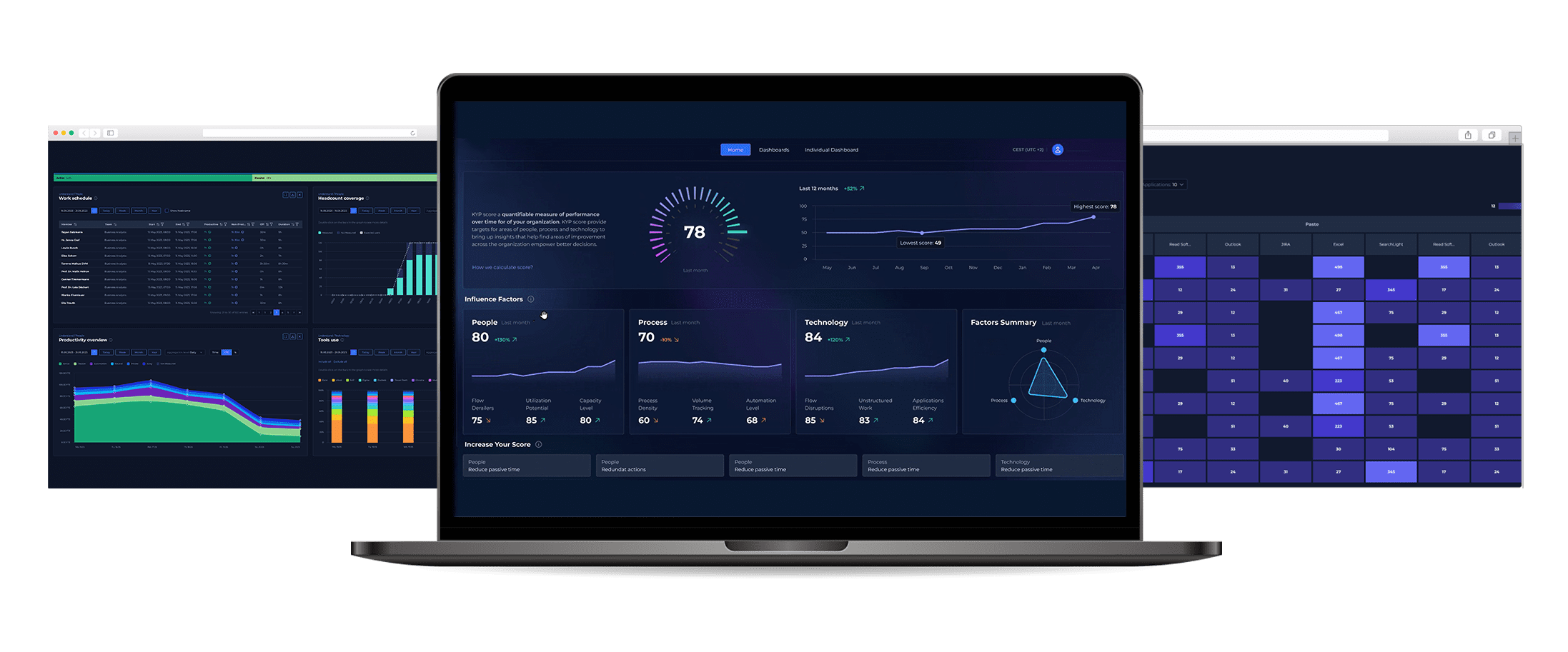Process intelligence, enabled by productivity mining, bridges the gap between IT and business units. By analyzing how tasks are performed, it unveils insights into business processes, identifying inefficiencies and improvement areas. One of the many use cases of process intelligence is to help IT and business develop a shared understanding of requirements for business improvement and transformation, leading to improved tactical and strategic alignment between these two important functions.
Why IT and Business Often Misalign: Common Challenges
In any enterprise, there can be misalignment between IT and business. The issues often include:
- Different priorities – The business may focus on rapid growth and customer engagement, while IT might prioritize system stability and security
- Communications gaps – Caused by the lack of a shared language or understanding, leading to misinterpretations or incomplete execution of projects
- Funding – There are often disagreements over budgeting and resourcing issues especially if either side feels their efforts or projects are undervalued
- Pace of technology adoption – Business units may seek rapid adoption of new technologies, whereas IT might be cautious due to potential risks and implementation challenges
- Data sharing – There may be differences over data leading to limited sharing and integration across different business systems. This is one of the major causes of problems with end-to-end process optimisation and automation
The relationship between IT and business could be impacted by many factors, making it a priority for leading organisations to bridge the divide between them. This is where process intelligence comes into its own.
The Power of Process Intelligence in Business Operations
Process intelligence, powered by productivity mining, is a technology-driven approach for organizations to gain detailed insights into their operational workflows, by extracting and analysing data directly from desktop activities.
It acts as a transformative tool, allowing the creation of virtual process models that can be examined fully for potential inefficiencies such as bottlenecks and resource allocation gaps, along with identifying areas that may benefit from enhanced employee training or infrastructure upgrades.
In simpler terms, process intelligence makes visible the invisible aspects of organizational workflows, offering a clear, quantitative view of the entire operation. This clarity is crucial — it helps both business and IT in an organization to unite over a shared understanding of operational realities and collaborate effectively to optimize and transform processes.

With a shared vision business and IT can align on strategy and develop a culture of data-driven decision-making to improve the chances of successful outcomes from modernization projects.
Furthermore, with process intelligence organizations gain insights that helps them become more innovative. By leveraging the insights, business and IT can collaborate on identifying previously unseen opportunities for new products and services. Accordingly, they can help the organisations grow and enter new markets. The insights also help speed up go to market by optimising the associated business and marketing processes.
Using Process Intelligence to Identify and Resolve Bottlenecks
Bottlenecks in processes cause delays, leading to friction, unnecessary costs and customer dissatisfaction. They can result from many different causes including poor process design, a shortage of resources in a team, or a slow IT system.
Without process intelligence business and IT can only guess at the root causes of bottlenecks and often end up blaming each other for the problem. With process intelligence they can gain a common and empirical understanding of the problem and standardise on a shared language that demystifies IT and business terms for all.
If the bottleneck is caused by a business or process related issue then the business can take care of it but where an IT system or infrastructure is causing the problem only close collaboration with IT can lead to a fix. Insights from process intelligence can convince enterprise IT that a system needs optimising or upgrading.
With process intelligence, the business team can gather data to show how a slow IT system causes problems for the business. They can share the evidence with IT and work with them on a prioritized plan of activity to address the problem.
Budget and Resource Allocation Through Insights
Data gleaned from productivity mining acts as the backbone for informed IT investments, empowering organizations to improve their budget allocations and project prioritizations. By embracing process intelligence, organizations can gain a deep understanding of their operational dynamics, strengthening the business case for IT deployments and investments, and ensuring maximum Return on Investment (ROI).
The clarity provided by process intelligence enables organizations to allocate resources and budget to optimize overall operational and financial efficiency.
Implementation and Continuous Improvement
Capturing process intelligence never stops. Continuously mining interactions between people, processes and technology provides a feedback loop during the implementation of solutions and beyond, requiring both IT and business units to be mutually accountable for refining performance. It allows for real-time adjustments and improvements, ensuring that the organization stays responsive and adaptive to evolving demands and challenges.
This symbiotic approach between IT and business units nurtures a culture of continuous improvement helping with sustained growth, competitiveness and resilience in a changing business landscape.
Strategic Alignment for Long-term Planning
Process intelligence guides long-term strategies by providing invaluable insights. This ensures that prospective technology investments and innovations are aligned with business objectives, promoting scalability and growth.
Strategic alignment, enabled by process intelligence, can ensure that every step taken towards process and system improvement is within plans and contributes to future-proofing new investments.
Conclusion
Process intelligence, enabled by productivity mining, is not just a tool for identifying inefficiencies; it’s a platform for ongoing dialogue and collaboration between IT and business units. Whether it is optimizing and transforming processes or addressing performance problems with IT systems, the insights provided by process intelligence serve to improve alignment between these critical enterprise functions, leading to more successful outcomes from process optimization and transformation efforts.
Don’t let misalignment between IT and business hold back your organization’s growth. Dive deeper into the world of process intelligence to tap its transformative power. Whether you’re just starting on this journey or looking to enhance your existing strategies, taking the step towards a data-driven, collaborative approach can be a game-changer.
Ready to align your IT and business goals for optimal efficiency and strategic harmony? Find out more at KYP.ai Productivity 360.
 Sarah Burnett
Sarah Burnett 